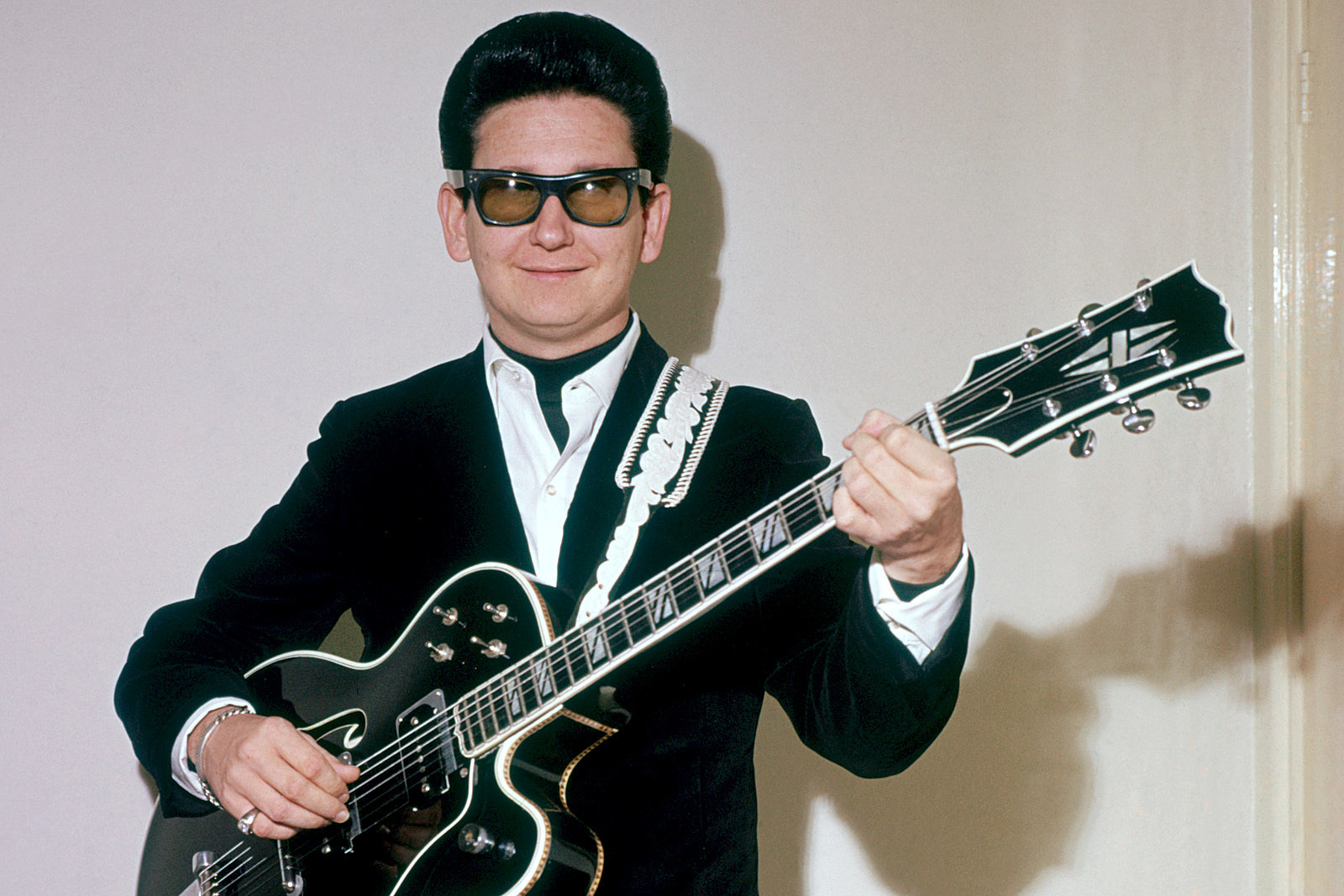
When considering the most iconic voices in the realm of rock music, one name that frequently stands out is undoubtedly **Roy Orbison**. Renowned for his extraordinary vocal range and the emotional depth of his ballads, Orbison established a distinctive place for himself within the music industry. His ability to convey profound feelings through his songs resonated with countless fans and continues to influence artists to this day. But who was Roy Orbison beyond his music? To truly appreciate his legacy, we must explore the captivating journey of this legendary artist, from his humble beginnings to his rise as a musical icon, and the lasting impact he has left on the world of rock and roll. His story is one of talent, perseverance, and an unwavering passion for music that transcends generations.
Early Life: The Roots of a Legend

Born to Sing
Roy Orbison entered the world on April 23, 1936, in the small town of Vernon, Texas. Growing up in a humble household, he was immersed in music from a very young age, which played a significant role in shaping his future. His passion for singing became evident early on, and by the age of 13, he had already formed his first musical group. This early experience not only honed his vocal skills but also ignited a lifelong love for performance that would eventually captivate audiences around the globe.
From College to the Stage
As his passion for music deepened, Orbison made the bold decision to leave college, a choice that would ultimately alter the course of his life. He joined a band called the Teen-Kings, where he began to make a name for himself in the music industry. In 1955, he recorded his first hit single, “Ooby Dooby”, which marked the beginning of a remarkable and influential career. This initial success set the stage for Orbison to explore his unique sound and develop a distinctive style that would resonate with fans for decades to come.
The Rise to Fame

Breaking into the Music Scene
Roy Orbison’s journey into the music industry began with the recording of his hit song “Ooby Dooby” at the legendary Sun Records. This pivotal moment marked the start of his career, but his early aspirations to become a rockabilly sensation didn’t unfold as he had hoped. Faced with challenges in that genre, Orbison made a strategic decision to pivot his focus. He relocated to Nashville, a city renowned for its rich musical heritage, where he immersed himself in songwriting, crafting tunes for other artists and honing his craft.
Creating Timeless Ballads
It was at Monument Records that Orbison truly discovered his unique artistic identity. Here, he began to compose a series of unforgettable ballads that highlighted his extraordinary vocal abilities. Songs such as “Only the Lonely” and “Crying” emerged as iconic pieces in his catalog, striking a chord with audiences and solidifying his status as a musical legend. These tracks not only showcased his impressive range but also captured the hearts of listeners, becoming enduring classics that continue to resonate across generations.
The Art of Storytelling in Music
What set Orbison apart was his ability to weave intricate narratives into his music. His songs transcended mere melodies; they were rich, emotional stories that drew listeners in. A prime example is “Running Scared.” This haunting ballad tells a gripping tale of romantic anxiety, immersing the audience in the singer’s turmoil as he grapples with the fear of losing his beloved. From the very first note, the tension escalates, creating a palpable sense of urgency and vulnerability. Listening to it feels like embarking on an emotional rollercoaster, where every twist and turn reflects the complexities of love and longing.
Iconic Hits and Cultural Impact

Chart-Topping Success
During the vibrant and transformative decade of the 1960s, Roy Orbison emerged as a formidable force in the music industry, releasing an impressive array of hits that would ultimately cement his legacy in the annals of music history. Among his most iconic tracks, “Oh, Pretty Woman,” which debuted in 1964, stands out as a defining moment in his career. This song not only topped the charts but also resonated deeply with audiences around the globe, captivating listeners with its catchy melody and heartfelt lyrics. The track’s widespread appeal contributed significantly to Orbison’s status as a beloved artist, making it one of the most recognizable songs of its time.
Surviving the British Invasion
As the British Invasion swept across the music scene in the mid-1960s, many American artists found themselves struggling to maintain their relevance and popularity. However, Roy Orbison proved to be an exception to this trend. His distinctive sound, characterized by a blend of rock, pop, and country influences, coupled with his profound emotional depth, allowed him to stand out in a rapidly changing musical landscape. While others faltered, Orbison not only survived but thrived, continuing to captivate audiences with his powerful voice and evocative songwriting. His ability to adapt and resonate with fans during this tumultuous period further solidified his place as a timeless icon in the world of music.
Personal Struggles and Resilience

Facing Tragedy
Despite his professional success, Orbison faced significant personal challenges. The mid-1960s brought a series of tragedies, including the loss of his wife and the death of his two sons. These events took a toll on his career, leading to a decline in his popularity.
A Comeback for the Ages
Just when it seemed like his career might be over, Orbison made a stunning comeback in the late 1980s. His song “In Dreams” was featured in the film Blue Velvet, reigniting interest in his music. It was a classic case of “what’s old is new again!”
The Traveling Wilburys: A Supergroup Emerges

Joining Forces with Legends
In 1988, Orbison became a member of the Traveling Wilburys, a supergroup that included rock legends like George Harrison, Bob Dylan, Tom Petty, and Jeff Lynne. Their debut album was a massive success, marking Orbison’s return to the top ten for the first time since 1964.
Legacy of the Wilburys
The Traveling Wilburys not only showcased Orbison’s talent but also introduced him to a new generation of fans. Their collaboration was a beautiful blend of styles, proving that great music knows no bounds.
Tragic End and Lasting Impact

The Final Curtain
Sadly, Roy Orbison’s life was cut short when he passed away from a heart attack on December 6, 1988, in Hendersonville, Tennessee. His death came just weeks after the release of the Wilburys’ album, leaving fans and fellow musicians in shock.
A Legacy That Lives On
Even after his passing, Orbison’s music continues to resonate. His posthumous album, Mystery Girl, featured the hit “You Got It”, which remained in the top ten for an impressive 18 weeks. Talk about a lasting legacy!
Honors and Recognition

Induction into the Rock and Roll Hall of Fame
In 1987, Orbison was inducted into the Rock and Roll Hall of Fame, a testament to his impact on the music industry. Bruce Springsteen, during his induction speech, captured the essence of Orbison’s music, stating, “Roy’s ballads were always best when you were alone in the dark… They were scary. His voice was unearthly.”
A Grammy Award for Lifetime Achievement
In 1998, Orbison received a Grammy Award for Lifetime Achievement, further solidifying his status as a musical icon. His contributions to music are celebrated not just for their popularity but for their emotional depth and artistry.
.jpg)
Roy Orbison was more than just a singer; he was a storyteller whose music touched the hearts of millions. His unique voice and ability to convey deep emotions through song set him apart in the crowded world of rock music. Even decades after his passing, his influence can still be felt, reminding us that true artistry never fades away.
Table: Key Milestones in Roy Orbison’s Career

| Year | Milestone |
|---|---|
| 1955 | Recorded “Ooby Dooby” |
| 1960 | Released “Only the Lonely” |
| 1964 | Hit with “Oh, Pretty Woman” |
| 1987 | Inducted into the Rock and Roll Hall of Fame |
| 1988 | Joined the Traveling Wilburys |
| 1989 | Posthumous release of “Mystery Girl” |

